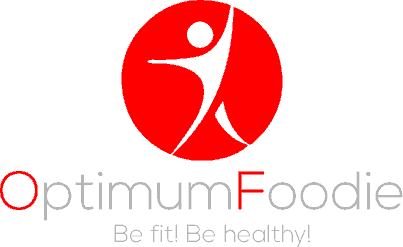If you have been managing diabetes, newly diagnosed or you have pre-diabetes (meaning you are the verge of developing full blown diabetes), what you eat is going to be a big part of managing or preventing diabetes.1
Eating the right diet would help control your blood sugar, and lose weight if you are overweight.2 Learn more about combining lifestyle modifications with medications.
The right diet to manage your diabetes need not be complicated, boring or tasteless, very far from it actually. Your diabetes does not overly restrict your meal options, you can still enjoy many of the things you eat; it’s all about portions.
Your meals generally should consist of
- Non-starchy vegetables
- Fruits
- Starch
- Protein
- Milk (skimmed or low fat milk)
- Fats and oil
One of the easiest ways to plan your meals is using “The Plate Method”. This method involves you eating more non-starchy vegetables, and lesser portions of starch and protein. It involves you using your plate to determine the portions of your food.
To get started just follow this simple steps:
- Get a plate that is 9 inches across (using a bigger plates means you would be eating more than you should using this method, or at least try to keep the food within a 9” circumference)
- Divide the plate into two equal halves, and then divide one of the halves into two, as shown.
- Half of your plate should be filled with non-starchy vegetables, a quarter with starchy foods and the last quarter with protein.
- Add a small fruit and a glass of low fat milk or yoghurt. (you should try to have 2-3 servings of low fat milk or yoghurt daily)
- Choose healthy fats in small quantities. For cooking use oils low in saturated fat as mentioned earlier. For salads, some healthy additions are nuts and avocado.
- To complete your meal, add a low-calorie drink like water, unsweetened tea or coffee2. (You can use sweeteners instead of sugar)

If you are still hungry after the food on your plate is gone, try having a salad with a low-calorie dressing to satisfy your appetite.4
Below is a little about each food group.
Non-starchy Vegetables
Non-starchy vegetables are low in carbohydrate and high in fiber. They also provide you with essential minerals and vitamins4. Their low starch and high fiber content are very important in lowering your blood sugar. Your options here are very vast, and your basis for choice would be mostly based on your personal preferences, the availability and costs. Examples include, okra, ugwu, water leaf, spinach, ewedu leaf, onions, tomatoes, pepper (all kinds and colours), cabbage, carrots, cucumber, lettuce, green beans, spring onions4 etc. These should make the most part of your meal.
Fruits
Fruits are high in fiber and provide you with essential vitamins and minerals. They also contain carbohydrates, and make up part of your carbohydrate sources. Because of their carbohydrate content, you should have one small fruit at a time, unlike the non-starchy vegetables. Examples of fruits include, apple, orange, pear, kiwi, plum, grapefruit, banana, grapes and so on.
Starch
These are the energy giving sources of your meal. You should try to eat more complex carbohydrates such as our starch sources (rice, yam, potato, bread and so on) and less simple carbohydrate (as found in many drinks, ice cream, sweets, chocolate and so on).
Complex carbohydrates can either be grains such as rice, wheat, millet, oat, bulgur and so on, or starchy vegetables such as plantain, yam, potato, cassava, cocoyam and so on. They digest more slowly, and so release glucose into the blood stream in a steadier manner, compared to the simpler sugars.
When choosing grain products, pick the ones that are the most nutritious. Choose whole grains. Whole grains are rich in vitamins, minerals, phytochemicals and fiber.5 "Refined" flours like white and enriched wheat flour, used to make white bread for example, include only part of the grain – the starchy part, and are not whole grain. They are missing many of the nutrients found in whole wheat flour5.
Finding whole grain foods can be a challenge. Some foods only contain a small amount of whole grain but will say it contains whole grain on the front of the package. For all cereals and grains, read the ingredient list and look for the following sources of whole grains as the first ingredient:
Bulgur (cracked wheat), whole wheat flour, whole oats/oatmeal, whole grain corn/corn meal brown rice, whole rye, whole grain barley, triticale, millet, quinao, sorghum.5
Protein
These provide you with essential amino-acids for healthy muscles, skin and hair. In selecting your protein sources you should try to pick sources with less fat, such as lean meat (those which have had their fat trimmed), chicken and turkey (remove the skin to reduce the saturated fat and cholesterol), skimmed milk, low fat yoghurt. Plant-based protein generally have lesser amount of fats compared to animal-based protein.6
Examples of animal based protein include, meat, fish, chicken, turkey, eggs (egg yolk is high in cholesterol, limit to one a day, but you can have more of the white part), sea food such as shrimps, snails, crabs, lobsters and so on. Examples of plant based protein include, all kinds of beans (pinto, kidney, black beans), peas and nuts.6
Fats
Despite the belief that fats are bad for you, they are required for general health. Fats help your body synthesize fat-soluble vitamins, such as vitamin D.
There are different kinds of fats, based on their chemistry, but this is what you need to know; you should eat less saturated fat and more of unsaturated fats (mono-unsaturated and poly-unsaturated) and cut down on trans-fat completely (check food labels for their trans-fat content). Saturated and trans-fat have been associated with cardiovascular diseases.7
Nuts (pea, cashew, almond, pistachio nuts) and avocados are sources of monounsaturated fats. Fish and seafood are primary sources of polyunsaturated fats. Sea foods like shrimps, prawns, crabs are high in cholesterol and should be eaten in moderation, especially in people who also have dyslipidaemia (high cholesterol levels); the trick to consuming these otherwise healthy foods is to cut down on all other sources of cholesterol (such as organ meat and egg yolk) the days you do eat them.
In selecting vegetable oils, check the labels and pick those with the saturated fat content way less than the combination of the unsaturated fats (the mono plus the poly). Oils rich in unsaturated fat include, olive, sunflower, canola, groundnut, soya bean oil; while those with higher saturated fat content and should therefore be reduced include, palm oil, coconut oil and palm olein (the popular vegetable oils).
Below are examples of what your plate could look like:


To learn even more about eating to prevent and manage high blood sugar, get our book, What Should I be Eating?

References
1 Diabetes Self Management (2015), Diabetes Meal Planning: The Plate Method. Available at: http://www.diabetesselfmanagement.com/blog/diabetes-meal-planning-the-plate-method/ [Assessed 28/07/2016]
2 American Diabetes Association, Create Your Plate. Available at: http://www.diabetes.org/food-and-fitness/food/planning-meals/create-your-plate/?referrer=https://www.google.com.ng/ [Assessed 28/07/2016]
3. Managing Diabetes. Available at: https://www.myehcs.com/article/1123/Carb-Counting [Assessed 28/07/2016]
4 American Diabetes Association (2014), Non-starchy Vegetables. Available at http://www.diabetes.org/food-and-fitness/food/what-can-i-eat/making-healthy-food-choices/non-starchy-vegetables.html. [Assessed 28/07/2016]
5 American Diabetes Association (2014), Grains and Starchy Vegetables. Available at: http://www.diabetes.org/food-and-fitness/food/what-can-i-eat/making-healthy-food-choices/grains-and-starchy-vegetables.html [Assessed 28/07/2016]
6 American Diabetes Association (2014), Protein Foods. Available at: http://www.diabetes.org/food-and-fitness/food/what-can-i-eat/making-healthy-food-choices/meat-and-plant-based-protein.html [Assessed 28/07/2016]
7 Heart Foundation,Saturated and trans fat. Available at: http://heartfoundation.org.au/healthy-eating/food-and-nutrition/fats-and-cholesterol/saturated-and-trans-fat [Assessed 01/08/2016]

